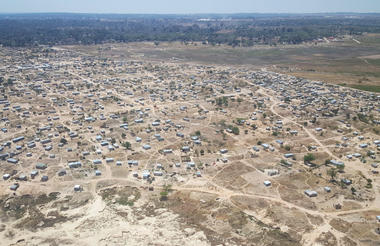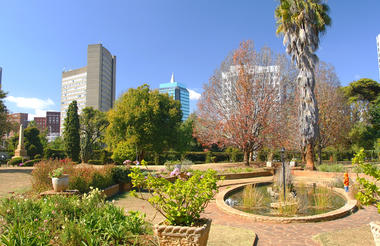Victoria Falls is an awe-inspiring sight of beauty located on the Zambezi River, serving as the border between Zambia and Zimbabwe. The massive basalt cliffs over which the falls thunder transform the Zambezi from a calm river into rapids that carve their way through dramatic gorges. The falls have been designated as a National Park and World Heritage Site, and they are also one of the Seven Natural Wonders of the World. Visitors can enjoy activities such as swimming, bungee jumping, and zip-lining at the falls. Additionally, there are more relaxed activities available, including sunset cruises, walking tours, and interactions with elephants.
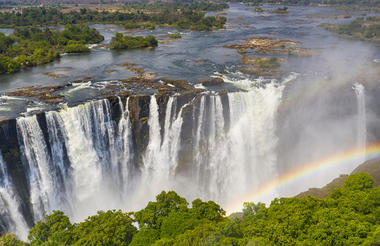
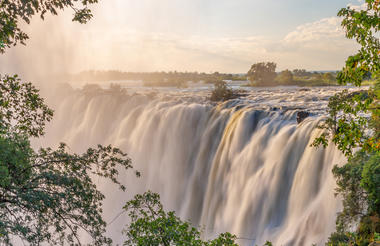

The Matopos Hills are rich in history dating back more than 300,000 years and in 2003 the area was designated a UNESCO World Heritage Site. Over 3,000 registered San rock art sites are dotted across the area in caves and crevasses. In more recent times the hills were of great significance to the Ndebele people, their name meaning ‘Bald Heads” was given by their founder Mzilikazi. The Hills are the resting place of the country’s most famous colonial icons including Cecil Rhodes, Leander Starr Jameson and Allan Wilson and his ill fated Shangani Patrol.
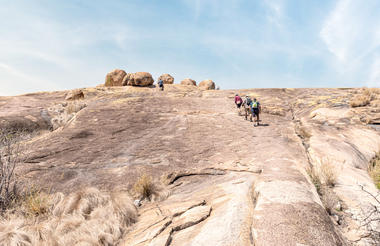
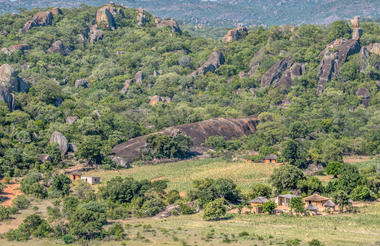
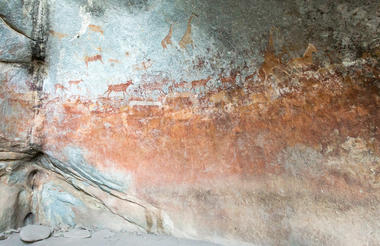
Encompassed by majestic granite formations in southeastern Zimbabwe, Lake Mutirikwe, formerly known as Lake Kyle or Kyle Dam, is a pristine reservoir meticulously constructed to supply water to the Lowveld farming estates, particularly around Triangle, a prominent centre for sugar cane cultivation. This breathtaking lake offers a variety of recreational activities, such as fishing, camping, leisurely picnicking, and serene sailing. As a part of the Lake Mutirikwi Recreational Park, it's home to diverse wildlife, including white rhinos, zebras, giraffes, impalas, and kudus. The park also hosts cultural education programs collaborating with the local Nyoongar people, illuminating the area's rich history and heritage. Explore this natural gem through horseback safaris, guided game drives, rhino trails, and birdwatching.
Bordering Mozambique in the southeastern lowveld of Zimbabwe, Gonarezhou, meaning ‘place of elephants’, is Zimbabwe’s second-largest national park and home to over 10 000 elephants. The Gonarezhou National Park extends across a vast area of floodplains, baobab-dotted scrubland, mopane woodland and pale orange sandstone cliffs. It is home to 4 of Africa’s ‘Big Five’ – elephant, leopard, lion and buffalo – as well as a multiplicity of other animal and bird species. Visitors can camp in an unfenced campsite for a truly close encounter with an array of spectacular wildlife including 140 species of mammal, at least 100 different reptile species and over 500 species of bird. Other highlights include: game viewing, bird watching, and viewing the beautiful Chilojo Cliffs towering over the scenic Runde River valley.



Resting in a scenic valley surrounded by mountains in Zimbabwe’s Eastern Highlands, Mutare is one of the largest cities in Zimbabwe known for its mountainous terrain, lush forests, melting pot of cultures and friendly, hospitable locals. Mutare has a small town feel but boasts all the modern conveniences of a large city. Points of interest include: the National Gallery of Zimbabwe, archaeological sites on Murahwa Hill, the Mutare Museum and Cross Kopje, bearing a memorial to African soldiers killed in World War One. The nearby Nyanga Mountains offer exquisite views, scenic hiking trails and a wealth of wildlife, while the Vumba Mountains are known for their lush vegetation, botanical gardens, and misty mystical mountain atmosphere.



Zimbabwe’s capital city is the country’s most cosmopolitan and contemporary destination, dotted with restaurants and bars, shops and markets. Its proud historical and cultural heritage is reflected in several well-preserved old buildings and informative museums, while its many parks and gardens provide a pleasant contrast to the bustling urban sectors. Located within easy reach of the city centre are the Mukuvisi Woodlands, comprising over 250 hectares of natural wilderness, while The Kopje – a rocky hill to the southwest of Harare – offers great views over the city.

